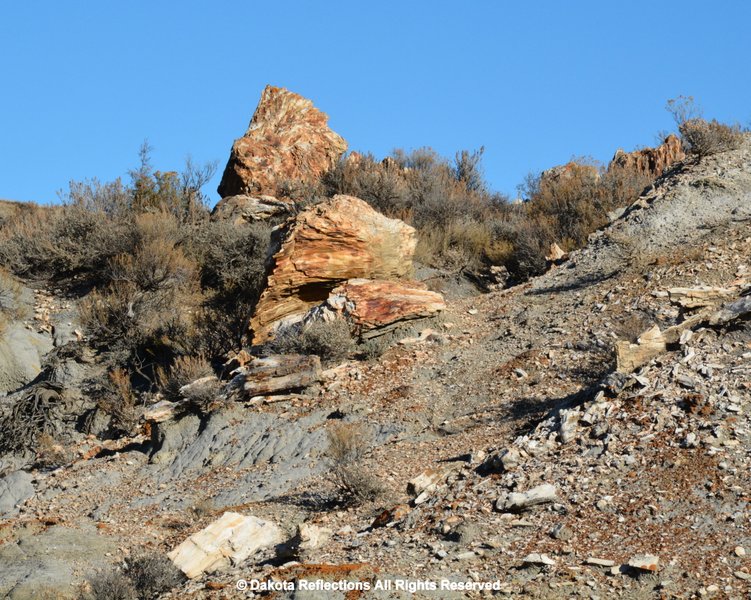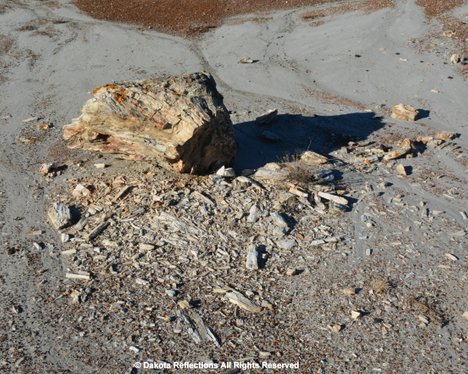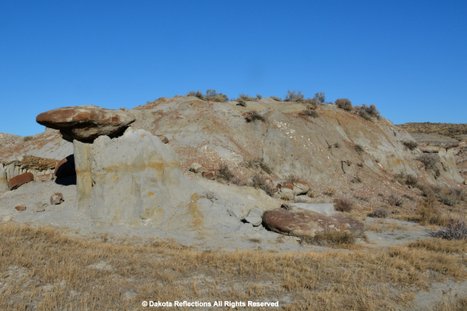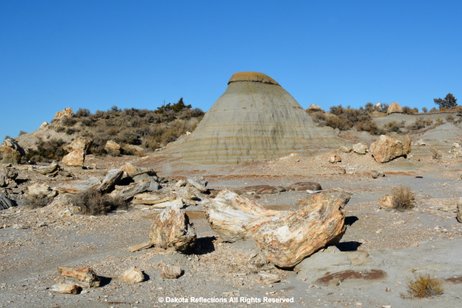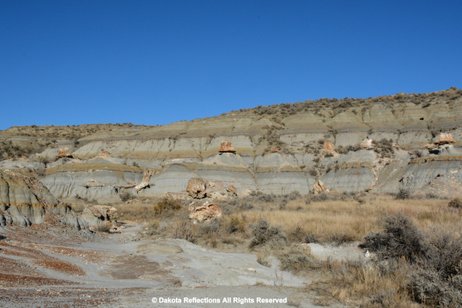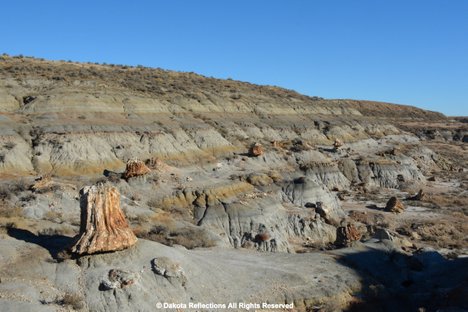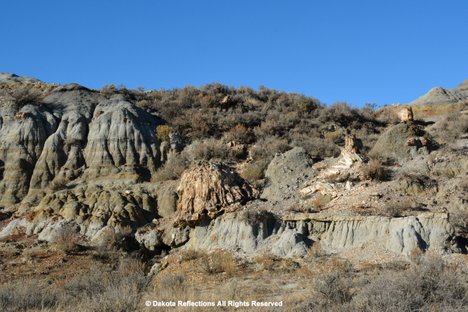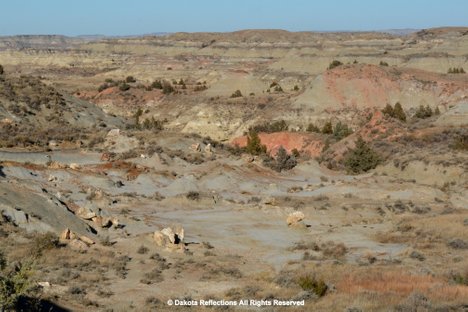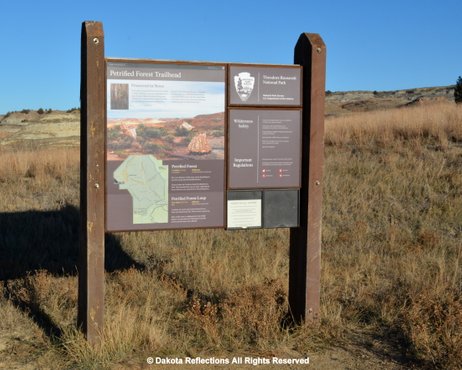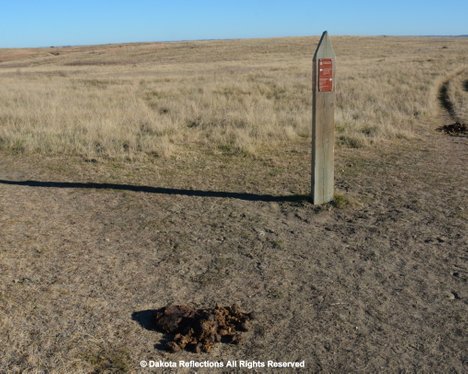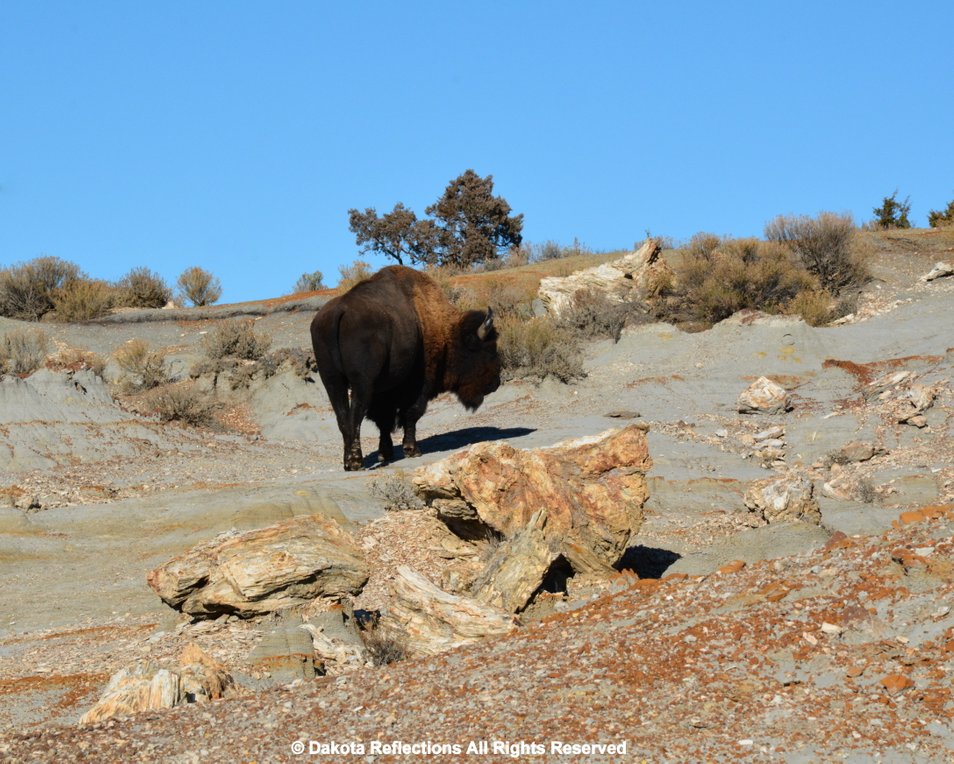Dakota Reflections
Petrified Forest in
Theodore Roosevelt National Park
North Dakota has one of the more significant petrified forests (thought to be the third largest) in the United States. Petrified forests are found in various places in the world and come from trees of different time periods in earth’s history.
The easiest way to get to the Petrified Forest is to head west of Medora on Interstate 94 for one mile and take Exit 23. Then turn right on 730A for about 7 miles on gravel road, past a ranch and several oil wells. Be mindfull of cattle which may wander on the road. Follow the signs to Petrified Forest and drive to the dirt parking lot. The trail is easily marked and you need to cross the gated fence. A short uphill hike of 1/2 mile will lead you to a post on the bluff. Take a right to cross prairie to the large North Petrified Forest Trail where a valley contains many petrified stumps. Be wary of bison, they won't move and if they are on the trail, you will need to detour around them. The trail to the left of the post leads to the small South Petrified Forest. Plan on at least 2 hours from Medora, about 20 minutes to drive to the parking lot and at least 1 hour at the North Petrified Forest.
Information at Petrified Forest Trailhead Parking Lot
Left to the North Petrified Forest
Right to the South Petrified Forest
Petrified Forests in the World
Areas with a large number of petrified trees include: South America- Argentina (38, 65 and 150 million years), Brazil (250- 299 million years), Ecuador (65-80 million years); Europe- United Kingdome (144 million years), France, Belgium, Italy, Czech Republic, Germany, Greece (20 million years), Ukraine; Africa- Libya, Namibia (280 million years), Egypt; Middle East- Israel, Saudi Arabia; Asia- China, Indonesia, India, Thailand; Australia- New Zealand, Australia and North America- Canada (40 million years) and the United States.
The United States has several wonderful petrified forests: Petrified Forest National Park in Arizona (211 and 218 million years); Mississippi Petrified Forest (36 million years); Florissant Fossil Beds National Monument, Colorado (34 million years); Yellowstone Petrified Forest and Gallatin Petrified Forest , Yellowstone National Park, Wyoming (50 million years); Escalante Petrified Forest State Park in Utah (150 million years); Petrified Forest in California (3.4 million years); Agate Desert, Medford, Oregon; Ginkgo/Wanapum State Park, Washington (15.5 million years); Gilboa Fossil Forest, New York (370 to 385 million years, oldest petrified forest yet discovered) and Theodore Roosevelt National Park (55 to 67 million years).
How do Trees Become Petrified?
Petrified wood is literally where the wood has turned to stone (from the Greek word petro for stone. Petrifaction occurs when the tree becomes buried and decomposition does not initially occur due to a lack of oxygen from volcanic ash or sediment covering the tree. Minerals such as silica in water deposit in the tree and stone (usually quartz) is formed. Tree rings can be seen.
Elements in the water make color in the stone. Carbon can cause the stone to turn black; cobalt, chromium, and copper can result in green or blue coloring; iron can result in red, brown, or yellow coloring; manganese can lead to pink or orange and manganese oxides can give black or yellow.
Western North Dakota was a subtropical forest 55 to 67 million years ago. Volcanic eruptions from the west or flooding buried trees similar to the modern Sequoia and bald Cypress trees and the Petrified Forest resulted.
The upright nature of the trees in Theodore Roosevelt National Park may or may not have been due to their final resting state. Studies of the volcanic eruption of Mt. St. Helens showed that displaced trees with remaining stumps settled in an upright position in Spirit Lake. The fact that most of the petrified trees are stump may indicate that the lower parts of the trees were buried quickly and that the upper tree sections were exposed and then decayed.
References
- Petrified Forest, Theodore Roosevelt National Park, National Park Service, U.S. Department of the Interior
- John P. Bluemle, North Dakota's Petrified Wood, North Dakota Notes No. 3, North Dakota Geological Survey

